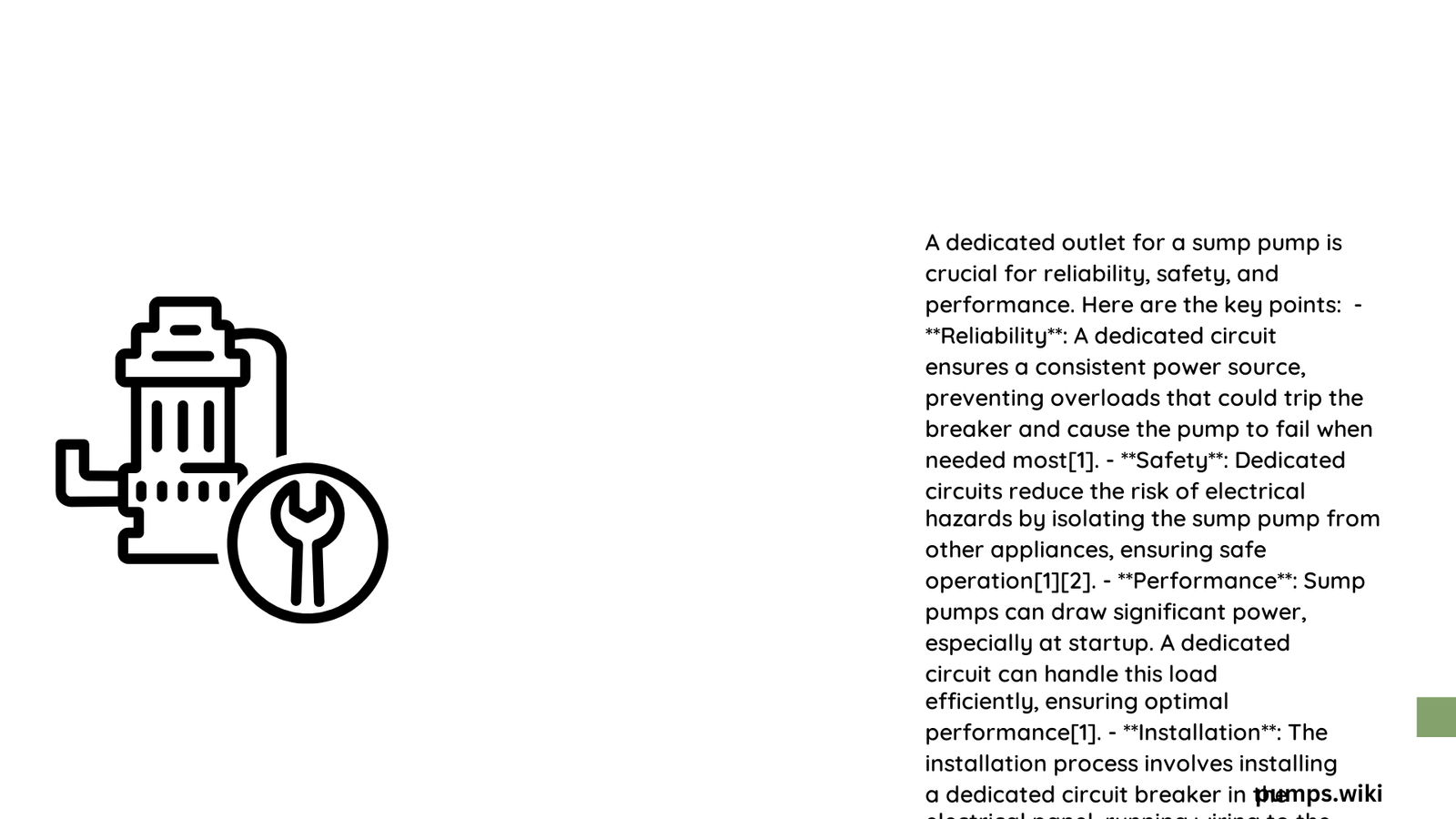A dedicated outlet for sump pump is crucial for ensuring reliable and safe electrical power in basement water management systems. Homeowners must understand the specific electrical requirements, including voltage, amperage, and circuit specifications to prevent potential failures during critical water drainage moments. Proper installation involves careful planning, adherence to local electrical codes, and professional-grade electrical components to guarantee optimal sump pump performance and longevity.
What Are the Electrical Specifications for a Sump Pump Outlet?
Voltage and Circuit Requirements
A dedicated outlet for sump pump typically requires:
| Specification | Details |
|---|---|
| Voltage | 120V |
| Amperage | 20-amp dedicated circuit |
| Wire Gauge | 12-gauge wire |
| Protection | GFCI (Ground Fault Circuit Interrupter) |
Why Dedicated Circuit Matters?
A dedicated circuit for your sump pump prevents:
– Unexpected power interruptions
– Potential circuit overloads
– Interference from other electrical appliances
– Reduced risk of pump failure during critical drainage moments
How to Install a Dedicated Outlet for Sump Pump?

Preparation Steps
Before installation, gather these essential materials:
– 12-gauge electrical wire
– 20-amp circuit breaker
– GFCI outlet
– Electrical box
– Wire connectors
– Voltage tester
– Drill and appropriate bits
Detailed Installation Process
- Location Assessment
- Identify optimal placement near sump pump
- Ensure proximity to electrical panel
-
Verify local building code requirements
-
Electrical Panel Preparation
- Turn off main power supply
- Install dedicated 20-amp circuit breaker
-
Confirm voltage compatibility
-
Wiring Installation
- Run 12-gauge wire from panel to outlet location
- Secure wire using appropriate staples
-
Avoid potential damage points
-
Outlet Mounting
- Install electrical box near sump pump
- Connect wiring to GFCI outlet
- Ensure proper grounding
What Are the Cost Considerations?
Breakdown of Expenses
| Category | Estimated Cost Range |
|---|---|
| Materials | $150 – $430 |
| Labor | $200 – $500 |
| Permits/Inspection | $70 – $300 |
| Total Project Cost | $420 – $1,230 |
Professional vs. DIY Installation
Recommendation: While DIY is possible, hiring a licensed electrician ensures:
– Code compliance
– Proper installation
– Warranty protection
– Reduced risk of electrical hazards
Safety Precautions and Best Practices
Critical Safety Guidelines
- Always disconnect power before working
- Use voltage tester
- Follow manufacturer’s instructions
- Comply with local electrical codes
- Consider professional installation for complex setups
Common Mistakes to Avoid
- Using extension cords
- Overloading circuits
- Neglecting GFCI protection
- Improper wire gauge selection
- Ignoring local building regulations
Maintenance Tips for Sump Pump Outlet
- Inspect outlet annually
- Test GFCI functionality
- Check for any wire damage
- Ensure clean, dry environment
- Verify circuit breaker performance
Conclusion
A dedicated outlet for sump pump represents a critical investment in home water management and electrical safety. Proper installation, adherence to electrical standards, and regular maintenance ensure reliable performance during potential flooding scenarios.
